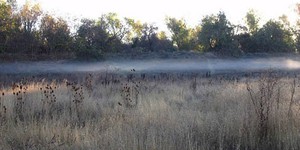Weather & Atmosphere Science Projects (28 results)
Everybody talks about the weather, but nobody does anything about it.
- Charles Dudley Warner
Weather and atmospheric science offer lots of opportunities for interesting explorations. It's a satisfyingly complex area, with lots of online resources so you can make your project as easy or as advanced as you want. And when you're done, you'll have a science fair project everyone can talk about.
|
Select a resource
Sort by
|
From the name, you might guess that a psychrometer is an instrument designed to measure your thoughts. Psych! Actually, it is an instrument that can help you forecast the weather. Read more to find out how it works.
Read more
Featured
Have you heard that garlic powder is supposed to inhibit the growth of bacteria? Which do you think would make a better disinfectant: a solution of garlic powder or a solution of bleach? This project shows you a straightforward way to compare the effectiveness of different disinfectants (or other antimicrobial agents), by measuring zones of inhibition on a culture plate.
Read more
Do you live in an area where the weather changes a lot from season to season throughout the year? Or do you live in a place where the weather stays pretty much the same all year long? How dynamic is the weather, and how does it compare to climate? In this experiment you can use the Internet to conduct your own investigation about how climate and weather in your local area change over time.
Read more
Floods can be very destructive, capable of leveling whole towns and decimating crops and fields. Typically in regions prone to flooding there are cycles of flooding that occur, usually in areas where a wet season comes after a period of drought. You can use precipitation data to test if incidents of flooding have been preceded by periods of drought. Look for long periods of dryness in the precipitation data to indicate a drought. You can also conduct an experiment on dry or moist soil to see…
Read more
As you move up or down in altitude or elevation, the temperature and pressure will change. This is particularly striking if you live near a mountain range. During the summer, at low altitudes you may have temperatures in the 80's or 90's and still be able to see snow on mountain peaks at high altitude. You can test the effect of altitude by comparing temperature data from weather stations at high and low altitudes. You can test the effect of elevation by making your own weather balloon and…
Read more
How does temperature change as barometric pressure changes? You can make a device to test this using a barometer and a thermometer on your stovetop. You can collect your own weather data from a barometer and thermometer over a period of a week or month. You can also use data from a weather station to plot the relationship between barometric pressure and temperature. Does the pressure change as humidity changes? Measure the pressure in a humid and non-humid environment (like your bathroom…
Read more
Many continents contain large mountain ranges that divide the continent into different regions. In the U.S. the Rocky Mountains mark the continental divide. The presence of a large mountain range can have a big effect on seasonal weather patterns. Also, the weather and climate on one side of a mountain range may be very different from weather and climate on the other side of the range. In the case of the Rocky Mountains, the western slope and eastern slope each have very different climates…
Read more
What are cold fronts and warm fronts? What happens when a cold front meets a warm front? You can test this using different temperatures of water. Use food coloring to label the cold and hot water, then carefully combine the two liquids together. What happens? How do they mix? You can also fill water balloons with hot or cold water, and then float in a hot or cold water bath. How does temperature affect the movements of the balloon? You can do similar experiments with hot and cold air in…
Read more
You can investigate how the geography of an area makes it prone to severe flash floods. Some areas, typically gullies or canyons, can flood extremely rapidly making it impossible to escape a flash flood. Compare the topography, or geographical shape, or these areas. What makes them prone to flash floods? Can you do an experiment showing how the flow of water increases as a channel narrows? Can you use topological maps of your region to identify areas at risk for flash floods? (NCAR, 2006;…
Read more
The poet Carl Sandburg wrote, "The fog comes on little cat feet..." In this weather science fair project, you'll discover why this beautiful, quiet creeper appears on some days, and not on others. If you are fascinated by fog and weather conditions, this science fair project is for you!
Read more
If you live in a humid environment, then you know that summer is not only hot, it is downright muggy. You can test the effect of humidity on temperature by measuring the temperature and humidity in your bathroom while running the shower. You can also use historical weather data to compare average seasonal temperatures in humid (e.g., Florida) and dry (e.g., Arizona) regions. How does humidity relate to temperature? Pressure? Why do humid environments tend to be coastal or tropical? How does…
Read more
|
Explore Our Science Videos
free
Basic Circuits Kit: Conductors and Insulators
Jumping Candle Flame Experiments – STEM activity







